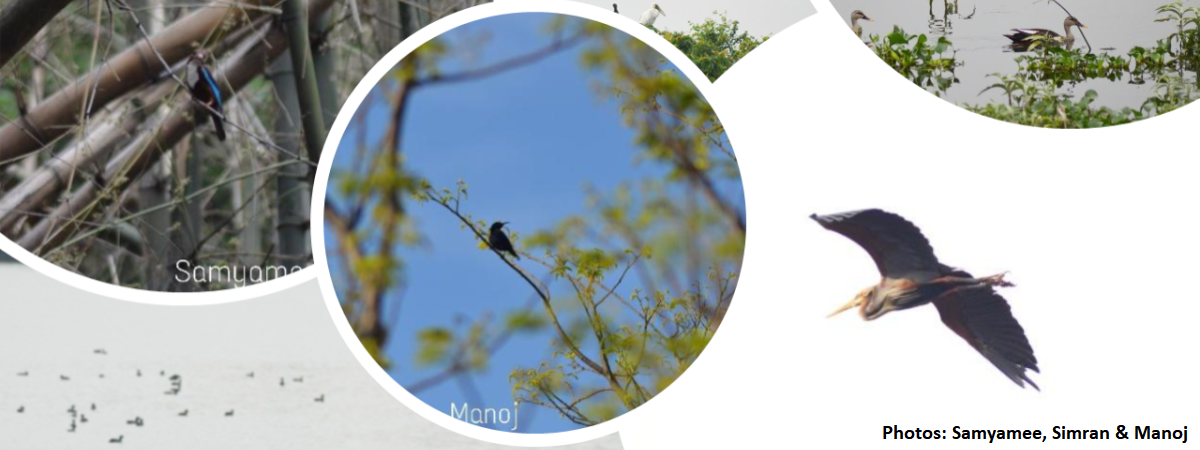Written by: Samyamee, Simran and Manoj
Waking up in the morning to look for and listen to birds was as rewarding as it could get, especially for someone who stays in a concrete jungle. Before joining the Urban Bird Monitoring Program by Gubbi Labs, we always associated birds and bird watching to places outside the city. This internship gave us the opportunity to explore lakes and wooded areas of Bengaluru; something which we would not have done so religiously otherwise. We were quite surprised by the variety and number of birds that we came across. It made us realize the importance of these places for urban wildlife as well as for the city dwellers.
Our first and most memorable learning experience was in JP Narayan Park with Vidisha and Seshadri from Gubbi Labs, where they mentored us, right from using the GPS Essentials app (which we use for the survey), to listening to, spotting and identifying birds. And thanks to their guidance, one day was enough for us to acquire the knowledge and skills to tune our curiosity to question more about birds, their behaviour and habitat from an ecological perspective.
Cubbon Park was the first of our surveys, but there were a few initial hiccups that we faced with the GPS Essentials application. We got a good hold of it when we went on to survey Lalbagh Botanical Gardens. We made it a point to stay in all the locations after the surveys and do some more birding. During one such after-survey birding in Lalbagh, we came across a very interesting activity happening between two male koels, a female koel and a Common Myna which would not move from its place. We suspected that this was going to be a case of brood parasitism where the koel would utilize the myna’s nest to lay its eggs.
HMT Park was the smallest wooded area we surveyed, which had a diameter spanning less than 500 metres. Surprisingly, this was also the place where we spotted many Purple-rumped Sunbirds, tailorbirds, Cinereous Tits and Ashy Prinias.
One of our favourite places to survey was Madiwala Lake where we sighted hundreds of Common Coots, over forty spot-billed Pelicans and several Openbill Storks. Spotting the Oriental White Ibis was the highlight of our experience as it is a threatened species under the IUCN list.
We observed that the number of House Crows seen were lesser than that of Jungle Crows and they were more common around lakes than in wooded areas. We also spotted two kinds of mynas, the Common and the Jungle Myna. In Cubbon Park, we came across a Common Myna feeding its chicks. Its nest was placed high in a tree hole and we could only see the beaks of the chicks. We conducted our last survey in Cubbon Park, where we bumped into an area covered with dry bamboo stalks. This place was alive with white-eyes, sunbirds and flowerpeckers. It was a delight to be present here and witness this moment.
When we started this internship, we seemed to be more inclined towards enjoying surveying wooded areas than the lakes, but this completely changed as we got more familiar with the water birds that we came across. Conducting the surveys got easier and more exciting with time and all of us were able to grasp this work comfortably.
Bird watching has now taken a very important and special place in our lives and it is one of those activities that always elicits an element of surprise within us. Now, that college has started, and we spend most of our time in class, we cannot help but exchange excited glances every time we hear a bird call. It always shakes us off the monotony of a lecture.
PS: The writers were part of the Urban Bird Monitoring Program by Gubbi Labs.


